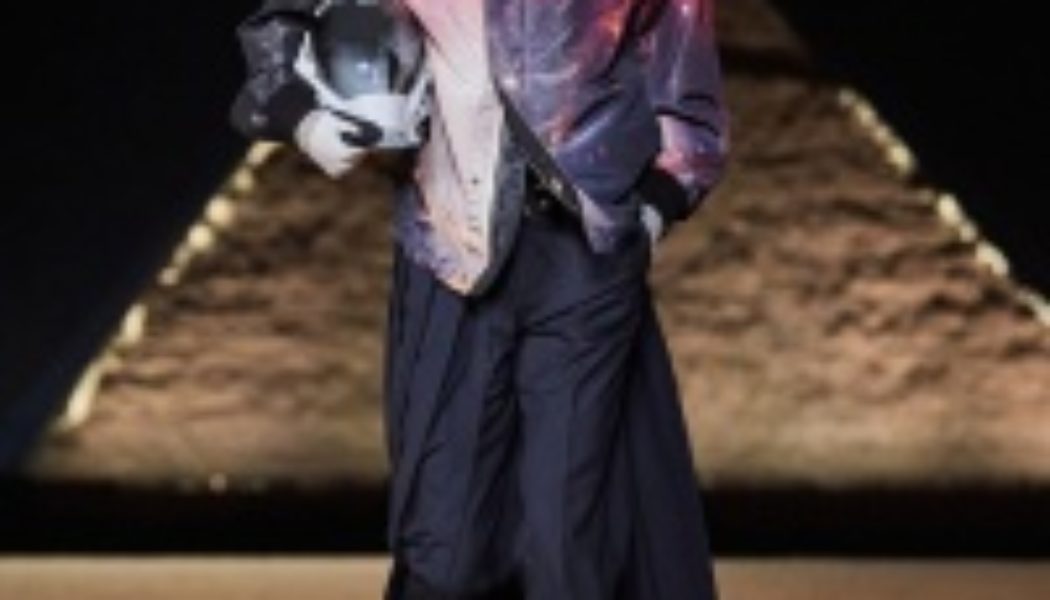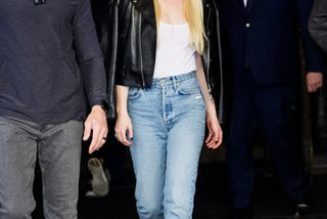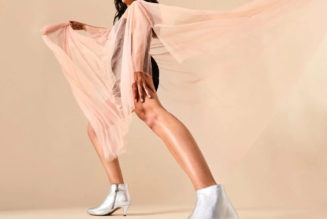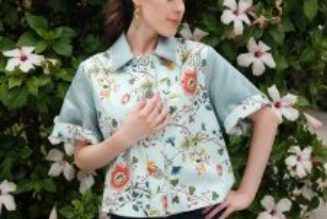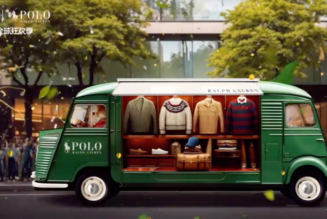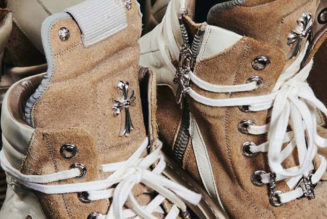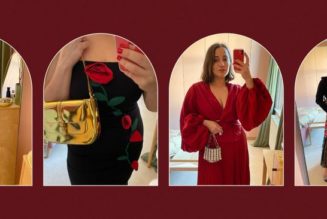NASA’s Artemis moon mission has not only kicked off a fresh era of space exploration, but also set a new frontier for brands keen to create thrilling experiences for their clients.
The space craze has gripped every area of consumer goods, from Coca-Cola’s limited-edition Starlight drink, billed as “space flavored,” to Chanel’s No.5 fragrance campaign featuring French actress Marion Cotillard dancing on the surface of the moon — not to mention the proliferation of NASA-branded apparel from brands ranging from Coach to Balenciaga.
Space was a key theme of the Dior men’s pre-fall collection, presented in December against the otherworldly setting of the Giza pyramids in Egypt. Titled “Guided by the Stars,” it featured colorful prints of distant galaxies from NASA’s newly inaugurated James Webb Space Telescope.
“Space leaves so much to the imagination, because so little is known about it, so for me, you’re looking into the unknown, which is very, very beautiful,” Kim Jones, artistic director of men’s collections at Dior, told WWD.
“We’re seeing all this amazing stuff and understanding the process of, we live on this blue spot in the middle of nowhere and we are really nothing. At the end of the day, if it was a desert, you wouldn’t even be a grain of sand, you’re too small. So, you know, the vastness of it is the thing that I think is so enthralling, or terrifying to some people,” he added.
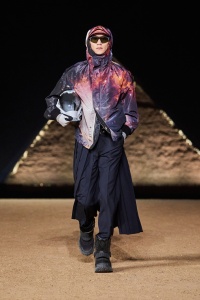
The fascination with the great beyond is extending into hospitality, with Canadian architectural firm Moon World Resorts revealing plans to develop a $5 billion destination resort, whose signature attraction promises to simulate the experience of walking on the lunar surface.
Sensing the strong potential for synergies, some space entrepreneurs have tapped seasoned luxury industry executives to handle their communications and establish bridges with brands spanning from Champagne and hotel groups to high-end goods.
Alain Bernard, former chief executive officer and president of Richemont North America, is now active in the sector through his Abbey Road Advisory consulting firm, whose clients include Nicolas Gaume, cofounder of Orbite, which plans to launch an astronaut training complex in the U.S. open to all space enthusiasts.
“Space is the new luxury,” Bernard said. “It’s a new frontier for clients who have seen a lot of things on Earth and who aspire to adventures, experiences, dreams and places they have yet to discover.”
Conversely, space is a rich source of inspiration for luxury brands. “Space fuels stories, dreams and aspirations for brands and houses. Many brands have built their identities — some very directly, others more indirectly — around the notion of adventure, exploration and travel and going ever further in the quest for exclusive spaces and new frontiers,” he noted.
For high-net-worth individuals who’ve seen it all on this planet, a trip to space may prove the ultimate high. But Bernard is keenly aware of the public backlash triggered by the billionaire space race, which saw Richard Branson and Jeff Bezos successfully fly to space in 2021.
“People ask, ‘What is the point of sending rockets into space and burning through millions of dollars and gallons of kerosene, when there are so many problems on Earth?’ We get that reaction a lot and it’s normal, because there’s a lot of education to be done around this topic,” he said.
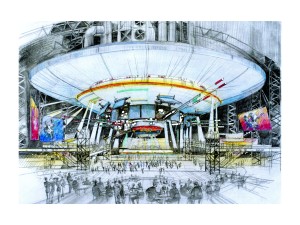
He believes space exploration should aim to improve conditions on Earth as it deals with the impact of climate change, and advises luxury brands to get involved with projects that benefit the planet, such as ventures that advance research and development in fields ranging from farming to clean energy and new materials.
“Space exploration offers many more opportunities than it creates problems and can bring solutions to terrestrial problems that we can’t solve on Earth,” he argued.
“In terms of innovation, we wouldn’t be able to have online meetings today without space. We wouldn’t have GPS, semiconductors, LED or water purification systems. Even baby formula was created decades ago thanks to research conducted for the first space explorations,” Bernard said.
“Brands have the most to gain from exploring deep partnerships where they’re involved, in the same way that they tackle problems on Earth today, in space exploration programs that contribute to making Earth a better place. Obviously, that goes way beyond putting your name on a spacesuit,” he added.
Some brands have made the leap. In 2020, Estée Lauder sent its Advanced Night Repair serum into space for a photo shoot as part of NASA’s efforts to promote business opportunities on the International Space Station, or ISS. The following year, the U.S. beauty giant became the exclusive partner of the ISS National Laboratory Sustainability Challenge funding research for plastics alternatives.
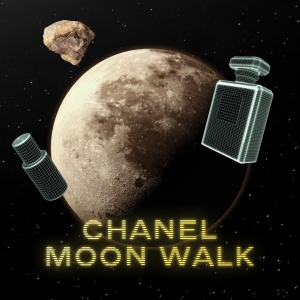
For Chanel, the moon is more of a signifier than a potential destination. Thomas du Pré de Saint Maur, its head of global creative resources, fragrance and beauty, fine jewelry and watches, said the theme of the most recent No.5 perfume holiday ad, introduced in 2020, was inspired by the satellite’s cultural significance as a symbol of femininity and renewal.
“If you look at the representations of ancient religions, the moon is a key element,” he said. “It also represents a more dreamlike way of talking about luxury, about becoming and starting over. That’s why we gravitated toward that theme, rather than a desire to connect with cosmogony or space.”
This year, the house augmented the campaign with a “Moon Walk” video game in which players had to destroy hurtling meteorites to win points. “We wanted to surf on the appeal of vintage games from the ‘80s, like Space Invaders,” du Pré de Saint Maur explained.
While Chanel’s beauty division has yet to sign any R&D partnerships with space agencies, he revealed that the luxury brand did tap a French supplier of aerospace materials to create the bottle for its Gabrielle fragrance, launched in 2017. “In fact, we’re already working on materials with the world of space,” he remarked.
Mercedes-Benz is another brand that has delved into the imaginary potential of the cosmos. In late October, it staged an immersive event titled “Entergalactic” at the Rodin Museum in Paris to celebrate its collaboration with American rapper Kid Cudi inspired by his “Man on the Moon” album trilogy.
“What we love about space is definitely that it’s the great unknown and this is what everybody’s so curious about, because it’s a world beyond your world that hasn’t been explored yet,” said Bettina Fetzer, vice president communications and marketing of Mercedes-Benz AG. “This is something that is, I would say, an inner force of any innovative brand, so I can see why brands are connecting with the space theme.”
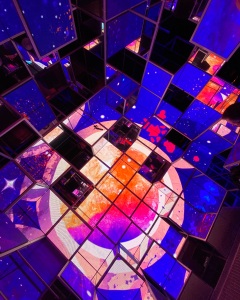
While the German carmaker plans to remain firmly anchored on Earth, it could stand to benefit from the development of new space materials and technologies in future. Mercedes-Benz aims for its cars to become fully electric by 2030 and carbon-neutral by 2039.
“Bringing back the technologies that you use in order to travel to space or from space could be something that enhances our way of engineering,” Fetzer said. “I think there’s no limits, and there is a bit of a takeover from those industries, for sure, but it’s nothing that we’re seriously investigating at the moment.”
Meanwhile, the house of Pierre Cardin, the original Space Age designer, has created what it bills as the world’s first “space dress,” made from thermal blankets originally used to protect the Cygnus cargo spacecraft that delivers supplies to the ISS.
The project is part of its partnership with Franco-Italian aerospace manufacturer Thales Alenia Space, which displayed the design at the 73rd International Astronautical Congress in Paris in September, alongside a virtual reality demo of its future Lunar Gateway space station.
To pay homage to the late Cardin’s lifelong fascination with the stars, his great-nephew Rodrigo Basilicati-Cardin, president and artistic director of Pierre Cardin, organized a show near Paris last January in front of a 177-foot-high replica of an Ariane 5 rocket.
On a trip to Kourou in French Guiana to witness an actual rocket launch, he learned more about how Thales Alenia Space is building satellites for Europe’s Copernicus program, an Earth observation program that gathers data for environmental protection, such as measuring human-induced atmospheric CO2 emissions and observing sea-surface temperatures.
As a result, Cardin and Thales partnered on the inaugural edition of the Prix Bulles Cardin awards, an annual prize distinguishing organizations and individuals working toward a green economy. Basilicati-Cardin noted that fashion has a special responsibility to drive awareness, given that it is one of the world’s most polluting industries.
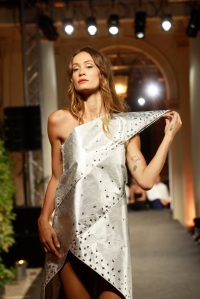
“Fashion has a duty to inform people at least about the fragile state of the planet,” he said. “I think it’s our job to say it, and say it often. It’s not just up to politicians.”
Basilicati-Cardin, who encourages his teams to use recycled fabrics, is on the hunt for further discarded space materials to incorporate into clothing or accessories. “For example, I would like to study what they use for spacesuits, because I want to see how some elements of that could be used on Earth,” he said.
Cardin liked to say he was designing uniforms for humans to wear on the moon or Mars. His heir hopes to realize that ambition. “Eventually, I’m sure it will be possible to create lunar domes with an atmosphere,” he said. “Scientists and others will be spending long periods of time up there. Why not study something for them?”
Indeed, space travel is about to explode, according to Gaume, the French executive who cofounded Orbite with U.S. space and technology entrepreneur Jason Andrews.
“We’re really at the dawn of a major transformation in terms of access to space,” he said, noting that the cost of going into orbit stands at $55 million. “With the launch of SpaceX’s Starship vessel, that cost will probably be divided by five within the next five or six years.”
And that’s just the start. “If you look ahead 15 or 20 years, going to space might cost the price of a business plane ticket,” he speculated. “It seems totally incredible but now, it’s very real.”
Gaume got his start in the hotel business. His great-grandfather Louis Gaume was instrumental in creating the French holiday resort of Arcachon, building luxury hotels including La Corniche, as well as villas for clients including the Vuitton and Lanvin families.
“Experience forms the link between luxury and the conquest of space,” he said, noting that brands like Louis Vuitton and Hermès have their roots in travel. “We think space will be at the core of the next generation of transportation and travel, and we want to be totally rooted in that DNA.”
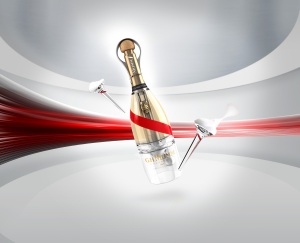
His first space venture, Space Cargo Unlimited, financed research into the future of agriculture on a climate-changing Earth by sending bottles of Petrus wine to the ISS. “We did advanced research on areas like polyphenols, but it’s also a luxury object. We sold our first bottle of space wine at Christie’s in a beautiful case made by our friends at Ateliers Victor,” he recalled.
Ahead of the launch of its first Spaceflight Gateway astronaut training complex, Orbite partnered with French space agency CNES on a pilot training program in Arcachon. In addition to zero-gravity flights and lectures with experts, participants enjoyed a workshop with the team of French chef Alain Ducasse, which makes special event meals for astronaut Thomas Pesquet.
That was followed by a lunch featuring G.H. Mumm’s special vintage Champagne from 1969, the year of the first moon landing. The house has also developed Mumm Grand Cordon Stellar, the first Champagne developed to be savored in space, which exits the bottle as a foam so that it can be enjoyed in zero gravity.
Gaume said his main objective is to raise awareness, both among future space travelers and earthbound space tourists, of the psychological impact of going into orbit, the famous overview effect. But he’s also keen to deliver a top-notch experience: the first Orbite resort, due to open in the U.S. in early 2025, will be conceived by renowned designer Philippe Starck.
He compared this era to the early days of aviation in the 1920s.
“There was the opportunity for discovery, so there were wealthy people traveling. There were also opportunities to create commercial links, to develop fruitful exchanges, and I would say that we are undoubtedly in the same dynamic with space today,” he said. “We think there are a lot of opportunities for big brands.”
